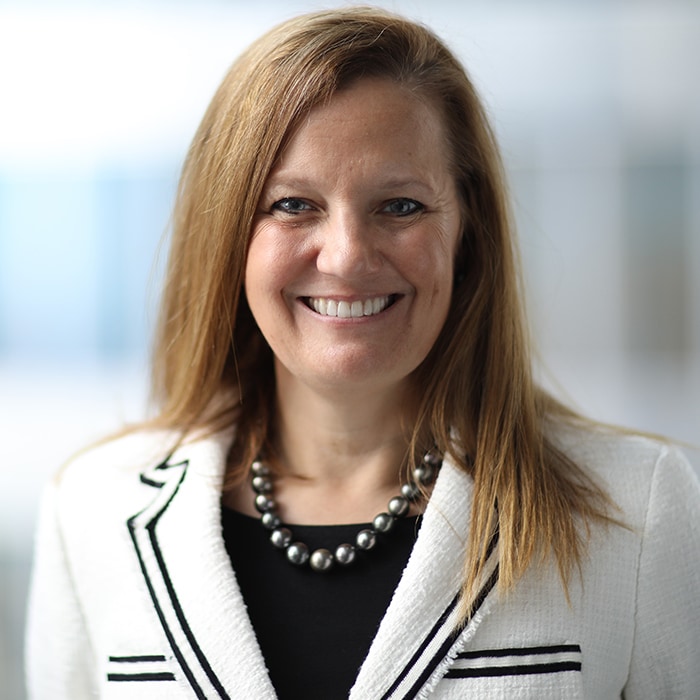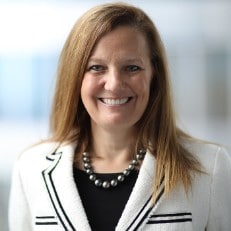
Electronic health records: Can the pain shift to value for physicians? Deloitte 2018 Survey of US Physicians
10 September 2018
Physicians and electronic health records (EHRs) have a complicated relationship. Here’s how physicians feel about interoperability, clinician workflow, and their overall engagement in the technology based on our 2018 survey.
Introduction
Electronic health record (EHR) technology is widely adopted in the United States and is at the center of multiple operational activities at many health care organizations. At this point, many health systems are trying to optimize and realize the benefits of this expensive investment, but there is still a long way to go. As demands on physicians continue to increase, so do their expectations of EHRs. And health systems and EHR vendors could do more to help physicians make the best use of this tool.
Learn More
Explore the full collection of results from the 2018 Surveys of US Health Care Consumers and Physicians
Read more from the Health care collection
Subscribe to receive related content from Deloitte Insights
Findings from the Deloitte 2018 Survey of US Physicians—a nationally representative survey of frontline physicians from a variety of health care settings—shed light on some areas in need of improvement. Although physicians are an important health care stakeholder, the survey results suggest that at best, they perceive themselves as passive participants in EHR optimization efforts and, at worst, they feel ignored. Furthermore, many physicians continue to be frustrated with EHRs, particularly due to lack of interoperability and the burden of documentation.
As physicians face increasing patient volumes, documentation requirements, and other demands on their time, EHRs should evolve to make it easier for physicians to do their job. To achieve this, health systems and EHR vendors can partner with physicians and other EHR users to understand how care teams use the EHR, how to improve EHR functionality, and how to standardize and/or redesign workflows to facilitate a consistent approach. And new technologies (such as natural language processing, voice recognition, and artificial intelligence) could help automate tasks that are not clinically relevant, but which physicians are expected to perform today.
About the study
The Deloitte 2018 Survey of US Physicians is a national survey of 624 US primary care and specialty physicians. The survey is representative of the American Medical Association Masterfile with respect to years in practice, gender, geography, practice type, and specialty, to reflect the national distribution of US physicians.
Relieving the documentation burden: An opportunity within reach
In our survey, 58 percent of physicians say there is a big opportunity for improvement in clinical documentation (figure 1). Responses to an open-ended question about one daily task that could be done more efficiently further suggest that documentation is an area ripe for automation (figure 2). Based on these responses, specific documentation tasks that could be done more efficiently include charting, capturing visit notes, data entry, and inputting boilerplate information to meet administrative requirements.


One old tool, the dictaphone, could make a reentry and aid in the automation of documentation. The frequency and context of the mention of dictation tools in the survey responses suggest that physicians either underutilize them or find them subpar. Prior to the advent of EHRs, dictation was a common way to record notes. Though early generations of EHRs did not have the capability to convert dictated notes into structured information, the technology has evolved and new tools are becoming available to codify typed or dictated text. In the meantime, it may be useful to understand the reasons for the low use of built-in dictation tools. Users may simply not know about them or underappreciate their capabilities.
Some organizations are experimenting with natural language processing (NLP) to unlock critical information from narrative reports such as progress notes, discharge summaries, and radiology and pathology reports to support patient care, administrative requirements, and research.1 Today, NLP technology is either expensive or requires considerable computer science expertise. As off-the-shelf NLP software becomes more accessible, organizations may discover additional documentation-related uses. Other technologies, such as artificial intelligence, robotic process automation, and blockchain, may support revenue cycle management activities that rely on EHR inputs.2 For instance, early adopters of artificial intelligence tools embedded in EHRs report improved case-mix index and reimbursement.3
Analytics on EHR usage, available in many EHR systems, can provide insights on the documentation burden and ways to address it. For instance, Deloitte’s report on physician alignment strategies describes how one organization measured “pajama time,” or EHR usage after hours, and leveraged this data to design interventions aimed at combatting physician burnout.4 Additionally, EHR usage metrics can be used to gauge the progress of EHR optimization initiatives. For example:5
- Long documentation time per appointment and documentation after work hours may indicate inefficient use of note templates, poorly designed note templates, and/or note bloat.6
- Low usage of built-in tools may suggest poor design or lack of user familiarity.
- In Deloitte’s client experience, we have observed that many note templates were designed before go-live and may not have been updated to reflect the reality of practice with the EHR. Or there may be too many templates to choose from, sometimes as many as 450.7
- Extensive documentation length may point at inefficiencies
- Case-mix index below benchmark or low correlation between the case-mix index and documentation time may signal failure to capture and document patient severity.
- The number of retrospective clinical documentation improvement inquiries may be associated with insufficient or unclear documentation.
Many organizations can start taking steps now toward improving the clinician documentation experience.
Interoperability: The top area for improvement
As in 2016, 62 percent of physicians in this year’s survey say that interoperability needs improvement (see figure 1). Given the need for data normalization, the inability of technological platforms to connect with each other and exchange information, the sheer number of platforms, and cybersecurity considerations, achieving interoperability can seem like a mammoth task. Nonetheless, it is a top request from physicians.
Organizations often face interoperability-related challenges at multiple levels:
- As health systems have grown through mergers and acquisitions, different parts of the organization may be on different EHR systems.
- Multiple other information systems and clinical equipment may need to be connected to contribute to and/or extract data from EHRs. And as the number of connected devices grows, so does the need to ensure data security without inhibiting user experience.
- Externally, physicians and health systems need to exchange clinical and other data with other providers, health insurers, and government agencies.
To tackle interoperability issues, health systems may need to employ multiple approaches: moving to a unified EHR platform or connecting multiple platforms through interface engines; APIs; health information exchange (HIE) approaches; blockchain to support secure data exchange; and/or custom-built solutions. How to prioritize these efforts may depend on the institution, its goals, and its information systems. For some, a vendor-developed HIE may be a good place to start. For those focused on population health, interfaces with lab companies may be a higher priority. And others (for instance, quaternary and tertiary care institutions) may benefit from improved ability to obtain clinical records from outside organizations.
Market dynamics may be more favorable than in the past: Standards, such as FHIR (Fast Healthcare Interoperability Resources), have matured; several consumer technology companies are making serious plays in the health care field in general and in the EHR space in particular;8 and there are signs of growing consumer demand for centralized access to their own medical information.9
That said, solving the interoperability challenge can require multiple external and internal parties to collaborate and agree on a common set of standards and governance, which may be beyond the ability of any one organization to do on its own. At a minimum, health systems and EHR vendors can share updates with their EHR users about important interoperability milestones achieved or functionalities added. Any interoperability improvement could support physicians in delivering care more efficiently.
Clinicians’ workflow: Worth another look
As the industry moves toward more team-based care, ensuring that workflows are optimized for the way care is delivered and taking full advantage of the available technologies can be valuable. Understanding and analyzing clinicians’ current workflow can be a good place to start. EHR usage analytics, observations, and conversations with clinicians can inform this step. For instance, our survey results suggest that EHR accessibility through mobile devices can be improved (as shown in figure 1).
While new technologies may have some answers, organizations should also thoughtfully evaluate their staffing. For instance, some have found scribes to be a worthwhile interim solution, freeing up physicians from data entry, mostly in emergency departments.10 Some organizations have discovered that one-on-one training on EHRs can optimize use, improve physicians’ efficiency, and increase their well-being.11 Others have invested in staffing and technology outside of EHRs to provide care management, analytics, and need-based coaching to physicians and staff on clinical and nonclinical topics.12
Physician feedback on EHRs: Often overlooked
Interestingly, just one-third (34 percent) of physicians in our survey say their organization or EHR vendor sought their feedback on EHR enhancements; and this proportion is about the same for employed or affiliated physicians vs. independents. Primary care physicians are an exception: forty-four percent of them have been asked for feedback.
Our survey data also points to a link between inviting feedback and sustaining engagement: Half (51 percent) of physicians who were not asked for feedback say they are unaware of EHR optimization efforts within their organization or through their EHR vendor, but only 16 percent of physicians invited to provide feedback say so (figure 3).

Taking physician feedback directly through physician engagement surveys, townhall meetings, or other means can communicate organizational support. And while it is possible to run analytics on EHR usage without asking physicians directly (as described above), a dual approach—seeking direct input as well as performing EHR usage analytics—can paint a more nuanced picture of how physicians use EHRs, what can be done to improve their experience, and what’s the impact of interventions. Additionally, organizations may find value in cultivating superusers who can support overall engagement efforts.13
Conclusion
Improved workflow and EHR experience can relieve physicians and other clinicians of menial tasks, and thus improve efficiency and satisfaction levels. New technologies can help evolve EHRs from hard-to-use data repositories to powerful workflow and analytics engines, but health systems don’t have to wait for these next-generation technologies. They can take steps today to improve clinician experience with EHRs:
- Proactively seek physician feedback. Direct feedback will not always translate into an EHR optimization solution. But combined with other data, it can help the informatics team understand the goal of an optimization request and identify the best method to achieve that goal.
- Optimize workflow. This will often require involving the entire care team. When using an EHR, how one team member uses it can affect how others do their work. Organizations may realize that a solution to a problem may not always involve changing the system but rather ensuring that all users adhere to the correct and standard workflow.
- Ensure ongoing support. This may include cultivating superusers, engaging onsite staff in go-live support models (such as other clinicians, administrative assistants, medical students, residents, and fellows), or offering one-on-one EHR training.14 Or organizations may realize that broader staffing support is needed to help with care management or training in areas outside of EHRs.
- Communicate progress. Fully addressing certain EHR issues (such as interoperability) may be a lengthy process. Communicating the progress and attainment of interim goals can signal continued commitment to resolving the issues that vex users.
- Stay abreast of new technology and the vendor landscape. Many emerging technologies are in the early stages of development, but the landscape is changing, with some technologies and use cases quickly approaching maturity. Health systems that ignore this field today may risk falling behind.
© 2021. See Terms of Use for more information.




